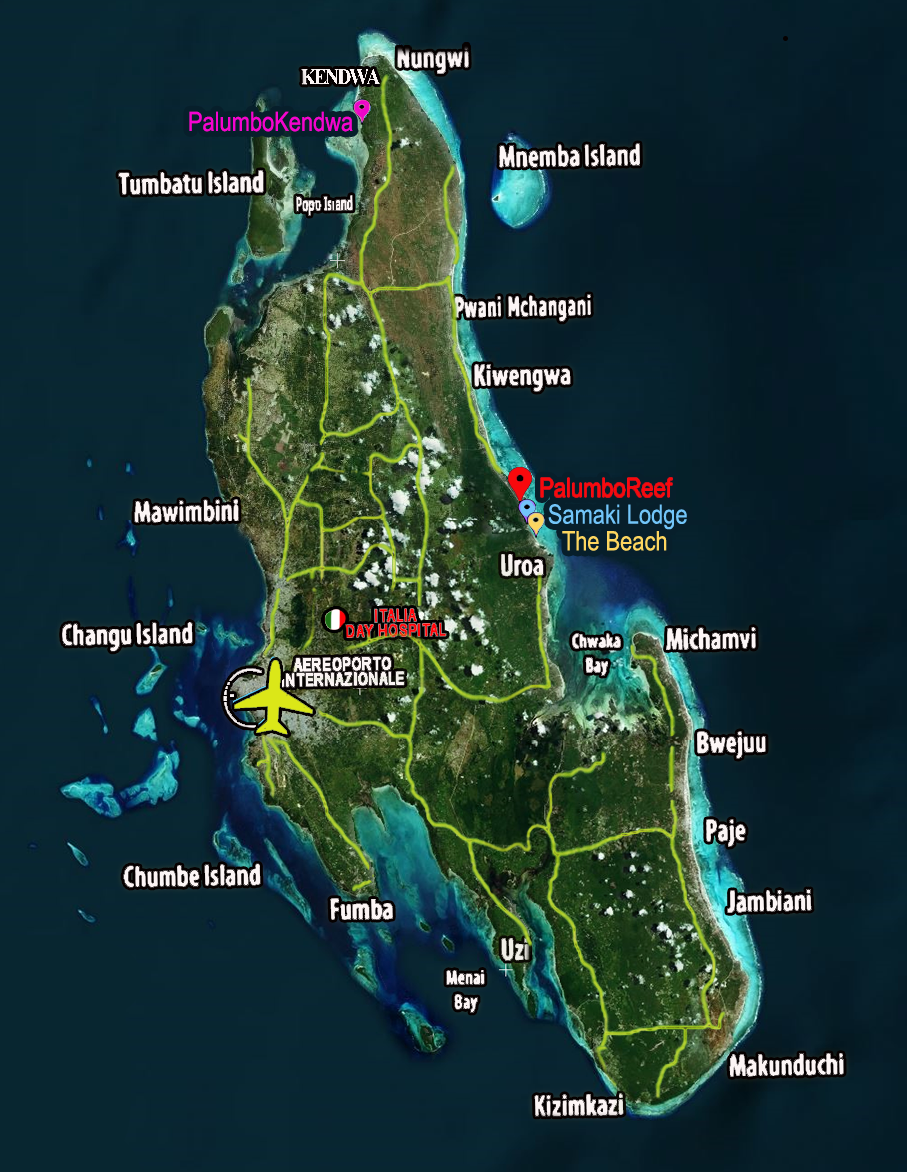History
Zanzibar (pronounced zænzibar) is part of the East African republic of Tanzania. It consists of the Zanzibar Archipelago in the Indian Ocean, 25–50 km (15–30 mi) off the coast of the mainland. It consists of numerous small islands and two large ones: Unguja (the main island, informally referred to as "Zanzibar"), and Pemba. Zanzibar was once a separate state with a long trading history within the Arab world; it united with Tanganyika to form Tanzania in 1964 and still enjoys a high degree of autonomy within the union. The capital of Zanzibar, located on the island of Unguja, is Zanzibar City, and its old quarter, known as Stone Town, is a World Heritage Site.
The presence of microlithic tools attests to at least 20,000 years of human occupation of Zanzibar. The islands became part of the historical record of the wider world when Arab traders discovered them and used them as a base for voyages between Arabia, India, and Africa. Unguja offered a protected and defensible harbour, so although the archipelago offered few products of value, the Arabs settled at what became Zanzibar City (Stone Town) as a convenient point from which to trade with East African coastal towns. They established garrisons on the islands and built the first mosque in the Southern hemisphere.
During the Age of Exploration, the Portuguese Empire was the first European power to gain control of Zanzibar, and the Portugese kept it for nearly 200 years. In 1698, Zanzibar fell under the control of the Sultanate of Oman, which developed an economy of trade and cash crops with a ruling Arab elite. Plantations were developed to grow spices, hence the term Spice Islands. Another major trade good for Zanzibar was ivory. The third pillar of the economy was slavery, giving Zanzibar an important place in the Arab slave trade, the Indian Ocean equivalent of the better-known Triangular Trade. Zanzibar City was the main trading port of the East African slave trade with about 50,000 slaves a year passing through the city.[2] The Sultan of Zanzibar controlled a substantial portion of the East African coast, known as Zanj; this included Mombasa, Dar es Salaam, and trading routes that extended much further inland, such as the route leading to Kindu on the Congo River.
The islands gained independence from Britain in December 1963 as a constitutional monarchy. A month later, the bloody Zanzibar Revolution, in which thousands of Arabs and Indians were killed in a genocide and thousands more expelled, led to the establishment of the Republic of Zanzibar and Pemba. That April, the republic was subsumed by the mainland former colony of Tanganyika. This United Republic of Tanganyika and Zanzibar was soon renamed (as a portmanteau) the United Republic of Tanzania, of which Zanzibar remains a semi-autonomous region.

THE ISLAND
Zanzibar or “Unguja”, The Spice
Island, dates back to the 1st century AD, when Greek
and Roman ships reached the east coast of Africa.
For many centuries, there was intense seaborne
trading activity between Asia and Africa, in a
succession of Arab, Persian, Portuguese and African
traders all searching for ivory, tortoiseshell,
ebony, coconuts, fruit, timber and slaves.
Zanzibar’s Stone Town is a UNESCO World Heritage
site. Its architecture and urban structure, customs
and habits are the outstanding material
manifestation of cultural fusion and harmonization.
Its townscape is virtually intact and its buildings
reflect a culture which has brought together and
blended different elements. The city has much to
offer, including fine restaurants serving local,
Asian, Arabic, European and Western cuisine. It is a
colorful bustling experience not to miss.
The island of Zanzibar holds great symbolic
importance in the suppression of slavery. Since it
was one of the main slave-trading ports in East
Africa, it also became the base from which opponents
of the slave trade, such as David Livingstone,
conducted their campaigns.
Unguja, as Zanzibar is also called, consists of two
islands: Zanzibar itself and Pemba. Although not too
far from each other the two locations have different
climates and vegetation
Excursions and safari
Are organized on-site excursions to the discovery of places of great historical and cultural of the island and all kinds of safari in Tanzania.
KiteCenter




